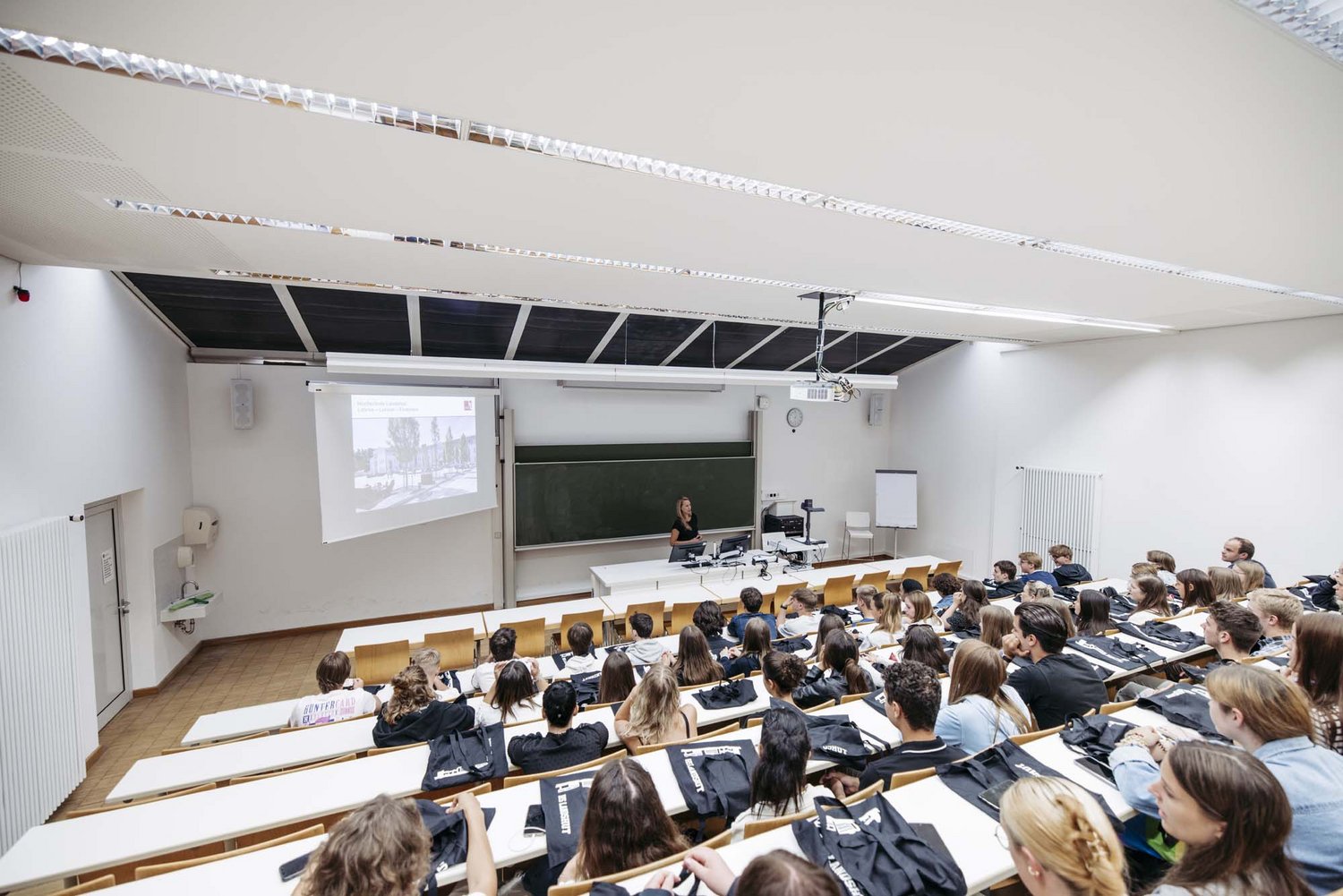How to read a Campusplan
Although we have a small, informal university campus, it is still a challenge to find all the seminar and lecture rooms, especially in the first few days and weeks. You will find signposts and maps around the campus to help you find your way around. Take a moment to read the following information so that you will soon be an expert in the field yourself.


All beginnings are...
... not as difficult as it looks. If you follow a few basics, you'll be in your lecture theatre in no time.
1. look at the timetable
Have a look in advance at which buildings you will (mainly) be travelling in on that day so that you can plan your routes well.
2. plan your time
Even if it is sometimes difficult, plan enough time to get to the event rooms.
3. use soft skills: Flexibility
If you actually want to finish your coffee in comfort: A ToGo reusable cup is the ideal companion on the way to and for the event. :-)
The room designations always consist of a capital letter and numbers. The letter indicates the part of the building. The faculties have their offices in the following parts of the building:
- A Business Administration
- C Electrical and Industrial Engineering, Interdisciplinary Studies, Mechanical and Civil Engineering
- D Social Work
- J Computer Science
- N University Management / University Administration
If you are looking for professors in your faculty or the secretary's office, for example, you will find what you are looking for in the respective faculty building. When it comes to event rooms (lectures, seminars, tutorials, laboratory practicals), these can take place anywhere on campus. The room designations will help you here.
The first number indicates the level/floor and the following number(s) the room number. For example, you will find "D207" in building D, 2nd floor, room 07, while "G003" is in the G-building, ground floor ("0"), room 03.
Click here for the campus map.
